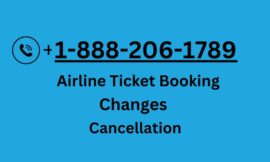In today’s event and marketing world, visual engagement is everything. Whether you’re organizing a product launch, corporate seminar, music concert, or even a wedding, renting an LED screen can significantly elevate the audience experience. LED displays offer high-definition visuals, wide viewing angles, and the flexibility to work indoors or outdoors—making them a popular choice for event planners and marketers alike.
However, not all LED screen rentals are created equal. Choosing the right screen for your needs involves more than just size and price. To help you make a smart, cost-effective decision, here are the most important factors to consider before your rent a LED screen.
- Event Type and Audience Size
The nature of your event will determine the size, brightness, and resolution of the LED screen you need. A large-scale music festival with thousands of attendees requires massive, high-brightness outdoor LED walls, whereas a small corporate seminar may only need a compact indoor screen. Consider:
- Is the event indoors or outdoors?
- How many attendees are expected?
- What’s the purpose—entertainment, education, or branding?
These answers help you and the rental provider decide on screen specifications like pixel pitch, size, and layout.
- Pixel Pitch and Resolution
Pixel pitch refers to the distance between the center of two adjacent pixels. A smaller pixel pitch means higher resolution and better image quality—ideal for close-up viewing.
- For indoor events where the audience is close, choose a pixel pitch between 1.5mm to 2.9mm.
- For outdoor events, a higher pixel pitch like 3.9mm to 6mm is acceptable because viewers are farther away.
Always match the pixel pitch with the expected viewing distance to avoid a blurry or pixelated display.
- Screen Size and Aspect Ratio
Your screen’s dimensions should align with the content you plan to display and the venue layout. Make sure the screen is large enough to be visible to everyone in the audience but not so massive that it overwhelms the space.
Also, ensure the aspect ratio matches your media content to avoid stretching or black bars on the screen. A 16:9 ratio is standard for most videos and presentations.
- Brightness and Weather Conditions
If you’re planning an outdoor event, screen brightness is crucial. Direct sunlight can wash out your visuals if the screen isn’t bright enough. Make sure your rental screen offers:
- Minimum 4,500–5,000 nits for outdoor visibility
- Weather resistance for rain, dust, and wind
- Anti-glare surfaces for clarity in all lighting conditions
Indoor screens generally require less brightness—usually between 800–1,500 nits is sufficient.
- Rental Budget
LED screen rentals can vary widely in price depending on size, resolution, duration, and additional services like setup and technical support. Before finalizing, ask:
- What’s included in the rental fee?
- Is delivery, installation, and teardown part of the package?
- Are there hourly or day-based rates?
- Is technical support available on-site?
Compare quotes from multiple vendors, but remember—cheapest isn’t always best. Aim for value over price.
- Setup and Technical Support
Renting a screen isn’t just about the hardware—it’s also about the service. Professional installation and real-time technical support ensure that your event runs smoothly.
- Does the vendor provide trained technicians for setup and monitoring?
- Is live support available during the event?
- What’s their response time in case of failure?
A reliable vendor should walk you through the entire process, from installation to troubleshooting.
- Content Compatibility
Make sure your LED screen rental supports the content formats you plan to use. Whether you’re streaming a live feed, displaying a PowerPoint presentation, or showcasing promotional videos, your screen and control system must be compatible with:
- HDMI, SDI, VGA, or USB input sources
- Video formats like MP4, MOV, AVI, etc.
- Real-time content control or streaming if needed
You may also want to inquire about media servers or playback systems that can be included with your rental.
- Viewing Angle and Mounting Options
The screen’s viewing angle is essential, especially for events where the audience is spread out. A wide horizontal and vertical viewing angle (typically 140°+) ensures that people can see the screen clearly from all directions.
Also, consider how the screen will be mounted:
- Wall-mounted, ground-supported, or truss-hung options
- Whether your venue can support the load and height
- Portability or modularity if screens need to be moved or reassembled
Make sure the rental provider offers flexibility and safety-certified mounting solutions.
- Rental Company Reputation
Finally, choose a rental company with a proven track record and positive reviews. Ask for:
- Client testimonials or references
- Portfolio of past events
- Certifications or insurance
- Equipment maintenance records
Reliable vendors not only provide high-quality screens but also deliver peace of mind through punctuality, professionalism, and support.
Final Thoughts
Renting an LED screen can transform your event from ordinary to unforgettable—but only if chosen wisely. By considering factors such as resolution, screen size, brightness, content compatibility, and vendor reliability, you ensure a seamless and impactful visual experience.
Don’t just rent a screen—rent a solution that’s tailored to your specific needs. With the right setup, your message will shine bright, your audience will stay engaged, and your event will be one to remember.


![[**Official™︎ Coinbase Support Helpline number @@] How to Contact Coinbase Support: Phone, Chat, and Email Explained](https://bioneerslive.org/wp-content/uploads/2025/05/conbase-tfn-1820-400-8909-usaKtJ6CD5-270x162.png)
